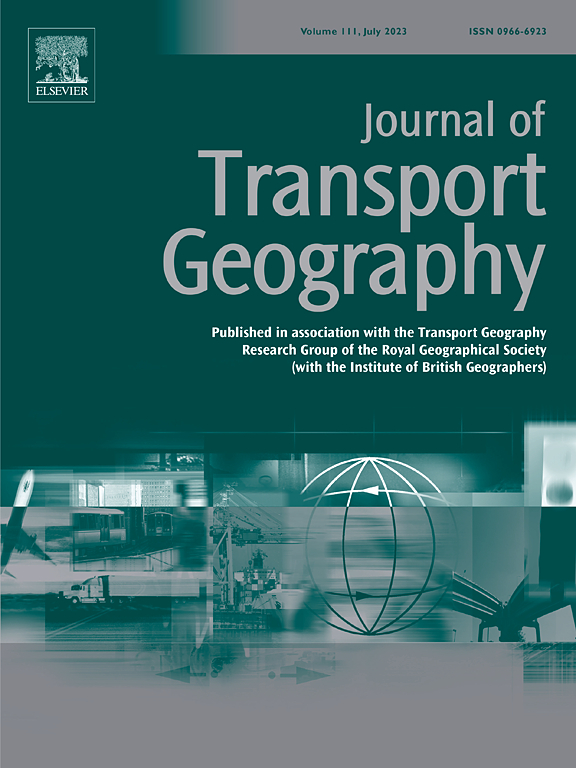覆盖面与频率:是空间覆盖率还是时间频率对公交乘客的影响更大?
IF 5.7
2区 工程技术
Q1 ECONOMICS
引用次数: 0
摘要
泰勒和芬克(Taylor and Fink,2003 年)对公交乘客的研究由来已久,他们对研究结果进行了阐释:"总而言之,公交乘客在很大程度上是公交管理者无法控制的因素的产物,尽管并非完全如此"。除公交票价外,很少有研究对公交机构职权范围内的因素进行仔细研究。研究发现,公交服务的提供会影响乘客数量,但 "服务提供 "的定义往往模糊不清,对于公交管理者如何以最佳方式提供服务,从而以乘客数量的形式创造回报,几乎没有任何启示。本研究探讨了空间覆盖率和时间频率对公交乘客量的影响,以确定哪种杠杆最有效。我们采用横截面研究设计,研究对象为美国 152 个地区。我们采用结构方程模型(SEM)来解释相互关联的变量之间存在的复杂关系。我们发现,这两个因素都能有力地预测公交乘客的数量,而服务频率的影响更大。本文章由计算机程序翻译,如有差异,请以英文原文为准。
Coverage vs frequency: Is spatial coverage or temporal frequency more impactful on transit ridership?
Transit ridership has long been studied, and the findings are elucidated by Taylor and Fink (2003) when they say, “to sum, transit ridership is largely, though not completely, a product of factors outside the control of transit managers.” Other than transit fare price, few studies have looked with much scrutiny at the factors that are within the purview of transit agencies. Transit service provision has been found to affect ridership, but “service provision” is often nebulously defined, shedding little light onto how transit managers can best provide service that will create returns in the form of transit ridership. This study examines the effects of spatial coverage and temporal frequency on transit ridership to determine just which lever is most effective. We use a cross-sectional study design with 152 regions around the United States. We employ structural equation modeling (SEM) to explain complex relationships that exist among interrelated variables. We find that both factors are strong predictors of transit ridership, with service frequency having a larger impact.
求助全文
通过发布文献求助,成功后即可免费获取论文全文。
去求助
来源期刊

Journal of Transport Geography
Multiple-
CiteScore
11.50
自引率
11.50%
发文量
197
期刊介绍:
A major resurgence has occurred in transport geography in the wake of political and policy changes, huge transport infrastructure projects and responses to urban traffic congestion. The Journal of Transport Geography provides a central focus for developments in this rapidly expanding sub-discipline.
 求助内容:
求助内容: 应助结果提醒方式:
应助结果提醒方式:


